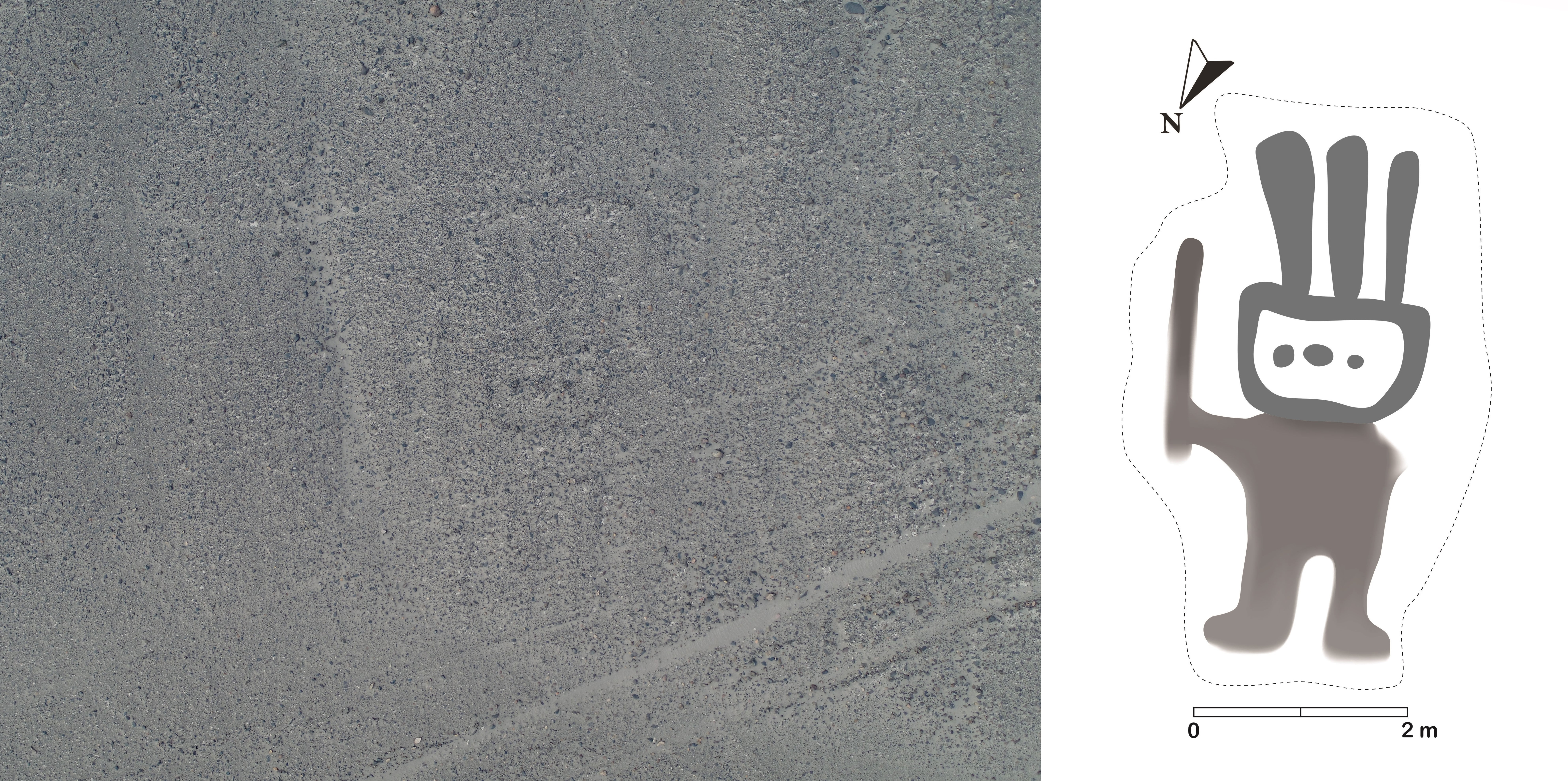Ancient Humanoid-Shaped Nazca Line Discovered in Peruvian Desert
The newfound Nazca Line was found with artificial intelligence.

A sprawling humanoid-shaped character etched into the Peruvian desert has just been discovered by a team of scientists using artificial intelligence. The geoglyph is one of hundreds of diverse shapes carved into a swath of Peru and called the Nazca Lines.
The newly found Nazca Line is about 13.1 feet (4 meters) long and 6.6 feet (2 m) wide. It appears to depict a human-like individual with a rectangular head who is holding a stick and wearing a headdress, said scientists from Yamagata University and IBM who discovered the etching.
"It is very difficult to recognize the purpose of this formation and the societal role of the humanoid," said one of the researchers Masato Sakai, a professor of archaeology at Yamagata University in Japan.
Related: See Images of the Mysterious Nazca Lines
The Nazca Lines, which are best seen from the air, cover an estimated 170 square miles (450 square kilometers) of Peru. Though their purpose is unknown, the lines appear to date between roughly 200 B.C. and A.D. 500, scientists have found. They depict a variety of motifs, including plants, animals and geometric shapes. A few, like the newly discovered Nazca Line, are in the shape of humans.
Discovering new Nazca Lines
Since 2006, Sakai's team has been studying the Nazca Lines, trying to understand what they were used for, and have found 143 new lines since that time. Discovering new lines is difficult since the Nazca Lines are sometimes poorly preserved, making them hard to spot in aerial photographs. The fact that irrigation systems and roads crisscross the Nazca region also makes the geoglyphs hard to detect.
What makes the discovery of the newest Nazca Line special is how it was discovered: Sakai's team used an artificial intelligence powered by IBM's Watson Machine Learning Accelerator.
Get the world’s most fascinating discoveries delivered straight to your inbox.
The team showed pictures of Nazca Lines to the artificial intelligence so that it could learn what the lines look like. The artificial intelligence then went through a massive amount of aerial and satellite images as well as laser data from Lidar surveys to find Nazca Lines that had never been reported before. The artificial intelligence detected the presence of the humanoid Nazca Line and the scientists analyzed the machine's data and confirmed its existence.
Sakai's team and IBM plan to expand their collaboration by using PAIRS Geoscope (Physical Analytics Integrated Data Repository and Services) to analyze a larger amount of geographical information.
- Photos: Circular Geoglyphs Discovered in Peru's Sihuas Valley
- In Photos: Google Earth Reveals Sprawling Geoglyphs in Kazakhstan
- In Photos: Mysterious Amazonian Geoglyphs
Originally published on Live Science.


Owen Jarus is a regular contributor to Live Science who writes about archaeology and humans' past. He has also written for The Independent (UK), The Canadian Press (CP) and The Associated Press (AP), among others. Owen has a bachelor of arts degree from the University of Toronto and a journalism degree from Ryerson University.


